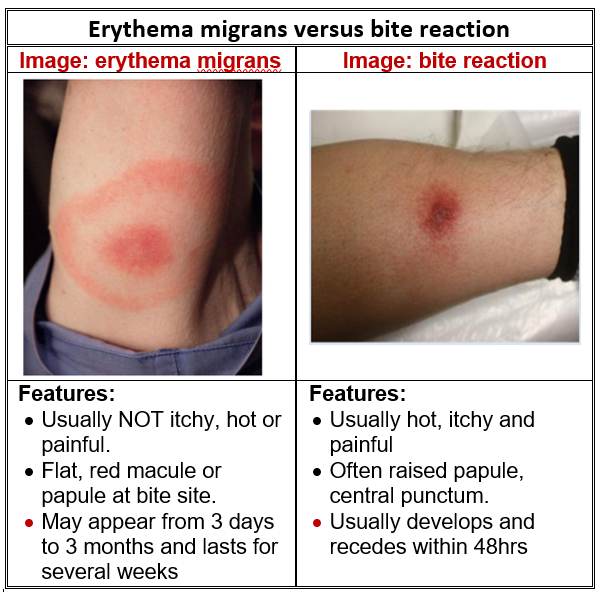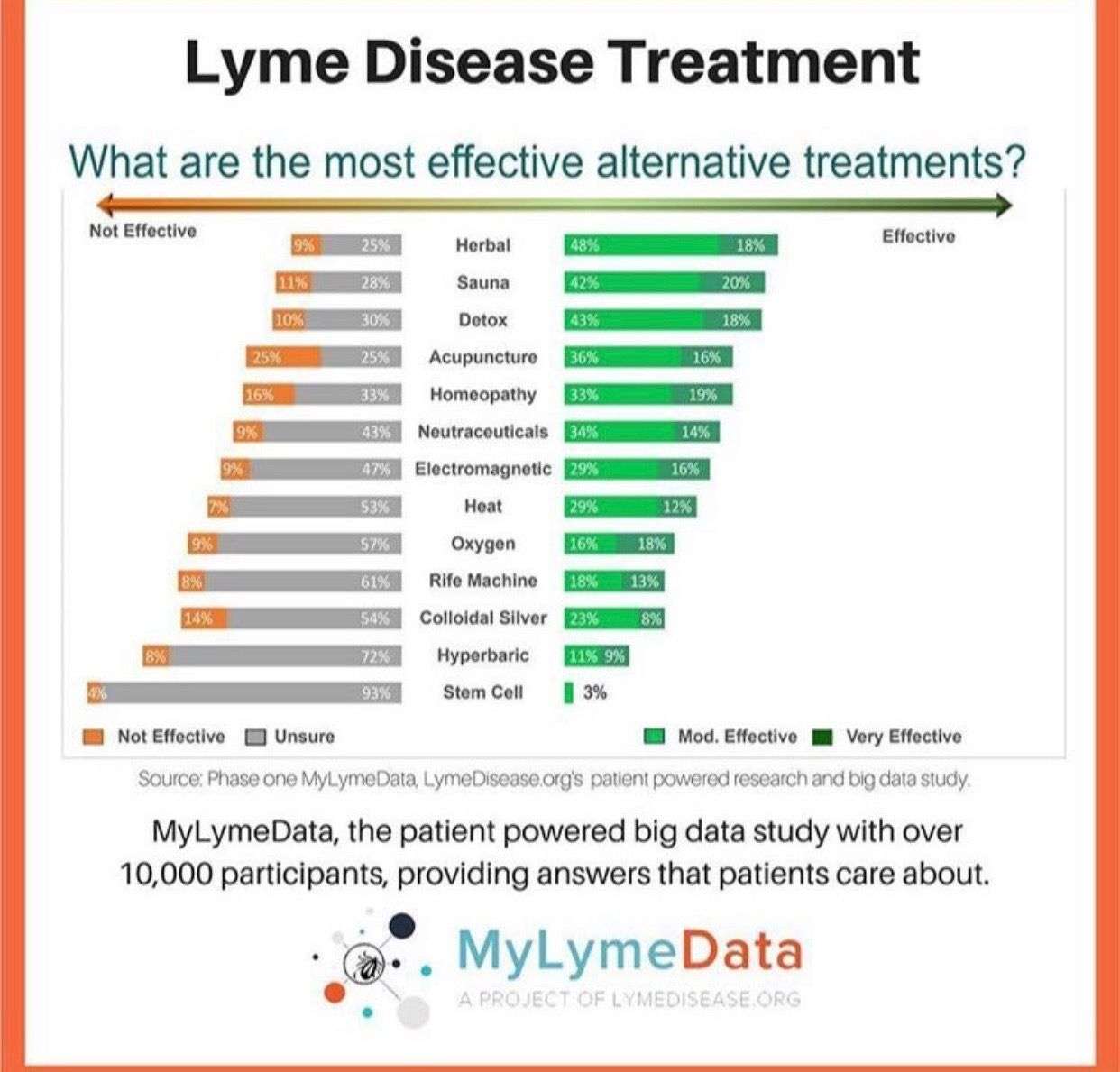Who Gets Lyme Disease
Anyone bitten by an infected deer tick can get Lyme disease. Most U.S. cases of Lyme disease happen in Connecticut, Delaware, Maine, Maryland, Massachusetts, Minnesota, New Hampshire, New Jersey, New York, Pennsylvania, Rhode Island, Vermont, Virginia, and Wisconsin. But Lyme disease is found in other parts of the U.S., Europe, Asia, and Australia too.
Later Symptoms Of Lyme Disease
More serious symptoms may develop if Lyme disease is left untreated or is not treated early. These can include:
- pain and swelling in the joints
- nerve problems such as numbness or pain in your limbs
- memory problems
- difficulty concentrating
Some of these problems will get better slowly with treatment. But they can persist if treatment is started late.
A few people with Lyme disease go on to develop long-term symptoms similar to those of fibromyalgia or chronic fatigue syndrome. This is known as post-infectious Lyme disease. It’s not clear exactly why this happens. It’s likely to be related to overactivity of your immune system rather than continued infection.
The Stages Of Lyme Disease
What is Lyme Disease?
Lyme disease, or Lyme borreliosis, is an infectious disease caused by the bacteria Borrelia. The bacteria Borrelia burgdorferi and Borrelia mayonii are responsible for Lyme disease in North America. In Europe and Asia, Borrelia afzelii and Borrelia garinii are responsible for Lyme disease. The bacteria is spread to humans via the bite of an infected tick, usually a black-legged tick .
Stages of Lyme disease
Lyme disease is categorized into three stages: early localized Lyme disease, early disseminated Lyme disease, and late disseminated Lyme disease. Symptoms depend on the stage of the disease.
Stage 1: Early localized Lyme disease
Early localized Lyme disease can occur anywhere from 3 to 30 days after the tick bite. Symptoms include, but are not limited to, the following:
- Red, bulls-eye type rash, otherwise known as erythema migrans, appears at the site of the tick bite.
- The rash is warm to the touch but is typically not itchy or painful.
- The rash can reach up to 12 inches in diameter.
- The rash disappears after 4 weeks.
Stage 2: Early disseminated Lyme disease
Early disseminated Lyme disease can develop days to weeks after a tick bite. Symptoms of stage 1 and stage 2 can overlap. Stage 2 is characterized by flu-like symptoms, including the following:
- Rash, which may appear in other areas
- Neurological symptoms, such as numbness and tingling
- Heart palpitations or chest pain
- Shortness of breath
Stage 3: Late disseminated Lyme disease
Recommended Reading: Dog Lyme Disease Treatment Cost
Sign Up For Our Newsletter
Disclaimer: The above material is provided for information purposes only. The material is not nor should be considered, or used as a substitute for, medical advice, diagnosis, or treatment, nor does it necessarily represent endorsement by or an official position of Global Lyme Alliance, Inc. or any of its directors, officers, advisors or volunteers. Advice on the testing, treatment or care of an individual patient should be obtained through consultation with a physician who has examined that patient or is familiar with that patients medical history. Global Lyme Alliance, Inc. makes no warranties of any kind regarding this Website, including as to the accuracy, completeness, currency or reliability of any information contained herein, and all such warranties are expressly disclaimed.
Posttreatment Lyme Disease Syndromes: Distinct Pathogenesis Caused By Maladaptive Host Responses

Center for Immunology and Inflammatory Diseases, Massachusetts General Hospital, Harvard Medical School, Boston, Massachusetts, USA.
Address correspondence to: Allen C. Steere, Massachusetts General Hospital, CNY 149/8301, 55 Fruit Street, Boston, Massachusetts 02114, USA. Phone: 617.726.1527 Email: .
J Clin Invest.
Lyme disease, which is epidemic in certain communities, primarily in the northeastern United States, is caused by the tick-borne spirochete Borrelia burgdorferi . When untreated, the disease usually occurs in stages with different manifestations at each stage . In the northeastern United States, the infection usually begins with a slowly expanding skin lesion, erythema migrans , often accompanied by nonspecific symptoms, including headache, myalgias, arthralgias, fever, malaise, and fatigue. Within weeks , neurologic or cardiac abnormalities may develop. Months later , usually following a latent period, intermittent or persistent monoarticular or oligoarticular arthritis commonly develops, lasting for several years, accompanied by minimal, if any, systemic symptoms. Rarely, patients have late neurologic involvement, characterized by a subtle encephalopathy or sensory polyneuropathy. Thus, in most patients, the natural history of Lyme disease, without treatment, is one of persistent infection for several years, with latent periods and changing system involvement.
Also Check: Do Antibiotics Cure Lyme Disease
Diagnosis Of Early Disseminated Lyme Disease
In order to diagnose Lyme disease, a doctor will order a blood test that checks for titers, which are the level of antibodies to the bacteria that cause the disease.
The enzyme-linked immunosorbent assay is the most common test for Lyme disease. The Western blot test, another antibody test, was once used to confirm the ELISA results. Current recommendations from the and the Food and Drug Administration state that a second ELISA test may be used to confirm Lyme disease.
The antibodies to B. burgdorferi can take anywhere from 4 to 6 weeks after infection to show up in your blood. As a result, people tested within the first few weeks of infection may test negative for Lyme disease. In this case, your doctor may choose to monitor your symptoms and test again at a later date to confirm the diagnosis.
If youre in an area where Lyme disease is common, your doctor may be able to diagnose Lyme disease in stage 1 based on their clinical experience and your symptoms.
If your doctor suspects you have early disseminated Lyme disease and the infection has spread throughout your body, they may recommend testing potentially affected areas. These tests may include:
Other antibiotics or intravenous medication may be necessary depending on your condition and additional symptoms.
You will likely have a rapid and complete recovery if you receive antibiotics in one of the early stages of Lyme disease.
How Long Do Lyme Disease Flare Ups Last
These symptoms can include fatigue, joint or muscle aches, and cognitive dysfunction. They may last up to six months or longer. These symptoms can interfere with a persons normal activities and may cause emotional distress as a result. However, most peoples symptoms improve after six months to a year.
Read Also: Common Treatment For Lyme Disease
Stage : Late Disseminated Lyme Disease
Timing: Months to years after a tick bite
The infection can spread to the joints or contribute to altered brain function, a condition known as encephalopathy.
Common symptoms of late disseminated Lyme disease include:
-
Arthritis with joint pain, warmth, and swelling that may be constant or come and go. Lyme disease-related arthritis typically occurs in one joint, usually the knee or another large joint, though it can also occur in more than one joint.
-
Concentration issues, brain fog, and memory issues
-
Nerve pain that feels like tingling, numbness, burning, or stabbing in the hands and feet
-
Anxiety, depression, mood swings, and other neuropsychiatric issues
-
Sleep disturbances such as difficulty falling or staying asleep, need for extended sleep, or unrefreshing sleep.
You may also experience a worsening of earlier Lyme disease symptoms.
In some people, Lyme disease can cause debilitating fatigue and sleep disturbances . Lyme disease-related arthritis typically occurs in a large joint like the knee .
Late Stage Lyme Disease: Symptoms And Treatment
by Lyme Mexico | Mar 17, 2021 | News |
There are three stages of Lyme disease. If you are experiencing the symptoms in the late stage, that means you have already passed through the first two stages of early localized and early disseminated Lyme disease.
During the early localized phase, you may have had a rash associated with the bite given by the infected tick. Symptoms following the bite may have included chills, fever, headaches, fatigue, stiff neck, muscle soreness, and possibly swollen lymph nodes.
If you did not receive the right treatment at the onset, you quickly moved into the next stage. During the early disseminated phase, the Lyme infection started spreading through your body.
Symptoms in the second stage include all of the signs from the early localized stage, only worse. You may also experience vision problems, pain or weakness in your limbs, heart palpitations, and facial paralysis such as bells palsy.
If left untreated, stage two will turn into late stage Lyme disease.
If you are in stage three, or the late disseminated stage, you have been struggling with symptoms for a long while and without treatment specific to Lyme disease.
The symptoms of late stage Lyme disease are genuine and can interfere with daily functioning.
Read Also: How Do They Treat Lyme Disease In Humans
Read Also: Can Lyme Disease Cause Lower Back Pain
What Should I Know About Lyme Disease
- Lyme disease is rarely fatal if treated early and is curable.
- Awareness about Lyme disease is the best way to prevent this disease.
- Using repellants, inspecting ticks and avoiding ticks are some of the effective ways to prevent disease occurrence.
- While going to woody areas, wear fully covered and light-colored clothes to avoid ticks.
- Pets can easily contract this disease, so it is necessary to make them wear a tick collar.
- For more protection, spray the chemical permethrin on clothes and camping sites.
- Some people have complained about lingering symptoms, even after undergoing recommended treatment for Lyme disease, known as post-treatment Lyme disease syndrome . The common complaints, which persist for six months or more are:
Why Are Antibiotics The First Line Of Treatment For Lyme Disease
The use of antibiotics is critical for treating Lyme disease. Without antibiotic treatment, the Lyme disease causing bacteria can evade the host immune system, disseminate through the blood stream, and persist in the body. Antibiotics go into the bacteria preferentially and either stop the multiplication of the bacteria or disrupt the cell wall of the bacteria and kill the bacteria . By stopping the growth or killing the bacteria the human host immune response is given a leg up to eradicate the residual infection. Without antibiotics, the infection in Lyme disease can evade the host immune system and more readily persist.
You May Like: Bitten By A Tick Lyme Disease
Learn The Stages Of Lyme Disease
Lyme disease occurs in three stages: early localized, early disseminated and late disseminated. However the stages can overlap and not all patients go through all three. A bulls-eye rash is usually considered one of the first signs of infection, but many people develop a different kind of rash or none at all. In most cases, Lyme symptoms can start with a flu-like illness. If untreated, Lyme disease symptoms can continue to worsen and turn into a long-lived debilitating illness.
How Is Lyme Disease Treated

Antibiotics, usually doxycycline or amoxicillin, are effective treatments for Lyme disease. How long your treatment lasts depends on the stage of infection. In general, its true that the sooner youre treated, the quicker and more complete the recovery.
Pregnant people should receive treatment for Lyme disease as well. There is, however, no evidence that a fetus can get the infection from its parent. Theres also no strong evidence that miscarriages are more likely after Lyme disease.
What should I do if a tick bites me?
If a tick bites you, the best way to remove it is by taking the following steps:
- Tug gently but firmly with blunt tweezers near the “head” of the tick at the level of your skin until it releases its hold on your skin.
- Avoid crushing the tick’s body or handling the tick with bare fingers because you could expose yourself to the bacteria in the tick.
- Wash the bite area thoroughly with soap and water.
- Don’t use kerosene, petroleum jelly or hot cigarette butts to remove the tick.
- Don’t squeeze the tick’s body with your fingers or tweezers.
You May Like: Natural Treatment For Lyme Disease In Adults
When Symptoms Persist
Some people experience Lyme disease symptoms for a long time. Just as COVID-19 patients with persistent symptoms are called long haulers, Lyme disease can also be a long-haul illness. There are many paths to long-haul Lyme. Someone might have gone undiagnosed and untreated for months or years while their illness progressed. Or, they may have been diagnosed and treated right away, but still experience ongoing symptoms.
-
Characteristics and outcome of facial nerve palsy from Lyme neuroborreliosis in the United States. Annals of Clinical and Translational Neurology, January 2022.
How Is It Treated
Facial palsy is treated with oral antibiotics and Lyme meningitis/radiculoneuritis can either be treated with oral or intravenous antibiotics, depending on severity . Most people with Lyme disease respond well to antibiotics and fully recover. Varying degrees of permanent nervous system damage may develop in people who do not receive treatment in the early stages of illness and who develop late-stage Lyme disease.
Recommended Reading: What Blood Test Tests For Lyme Disease
Where Are Ticks Found
Ticks are found throughout the UK and in other parts of Europe and North America. There are a high number of ticks in the Scottish Highlands.
They can be found in any areas with deep or overgrown plants where they have access to animals to feed on.
They’re common in woodland and moorland areas, but can also be found in gardens or parks.
Stage : Early Localized Disease
Symptoms of Lyme disease usually start 3 to 30 days after the tick bite. One of the earliest signs of the disease is a bulls-eye rash.
The rash occurs at the site of the tick bite, usually, but not always, as a central red spot surrounded by a clear spot with an area of redness at the edge. It may be warm to the touch, but its not painful and doesnt itch. This rash will gradually fade in most people.
The formal name for this rash is erythema migrans.
Some people with lighter skin have a rash thats solid red. Some people with darker skin may have a rash that resembles a bruise.
The rash can occur with or without systemic viral or flu-like symptoms.
Other symptoms commonly seen in this stage of Lyme disease include:
Youll have a general feeling of being unwell. A rash may appear in areas other than the tick bite.
This stage of the disease is primarily characterized by evidence of systemic infection, which means infection has spread throughout the body, including to other organs.
Symptoms can include:
- disturbances in heart rhythm, which can be caused by Lyme carditis
- neurologic conditions, such as numbness, tingling, facial and cranial nerve palsies, and meningitis
The symptoms of stages 1 and 2 can overlap.
Read Also: Best Lyme Disease Doctors In Nyc
What Is Neurologic Lyme Disease
Neurologic symptoms of Lyme disease occur when the Lyme disease bacteria affect the peripheral or central nervous systems.
- Cranial nerve involvement: When the cranial nerves are affected, facial palsy can occur on one or both sides of the face.
- Peripheral nerve involvement: When the peripheral nerves are affected, patients can develop radiculoneuropathy which can cause numbness, tingling, shooting pain, or weakness in the arms or legs.
- Central nervous system involvement: When the central nervous system is affected, Lyme meningitis can cause fever, headache, sensitivity to light, and stiff neck.
Out of every 100 patients whose cases are reported to CDC, 9 have facial palsy, 4 have radiculopathy, and 3 have meningitis or encephalitis. Because of reporting practices, this statistic may overestimate how often these manifestations are seen by clinicians.
What Is The Prognosis Of Lyme Disease
Prognosis is excellent and most patients recover completely, especially if treated early with appropriate antibiotics. Sometimes a recurrent infection can occur with certain strains, but Lyme disease can be managed well with medication. Co-infection by other organisms transmitted by the same tick bite can occur.
You May Like: Lyme Academy Of Fine Arts
Biorepositories And Research Cohorts
Well-characterized samples are an essential tool to help researchers develop and validate new diagnostic tests and to better understand the complexities of LD. Well-characterized sample sets can benefit medical providers, test developers, and the public at risk for LD . It is critical that sample users understand the criteria used to enroll participants, how samples were collected and stored, and what additional clinical and testing data may be available. Additional benefits can be realized when multiple sample users are using the same well-characterized sample sets. Current sample sets available for researchers include the CDC Lyme Serum Repository , the Lyme Disease Biobank , and samples from the Studies of Lyme Immunology and Clinical Events at Johns Hopkins University School of Medicine. Additionally, some investigators also have their own sample collections with, in some cases, blood samples, skin biopsy specimens and synovial fluid which form the basis for collaborative studies .
Lyme Disease Biobank
Long Island Outdoor Worker Cohort
Are There Alternative Treatments For Lyme Disease

There are a variety of alternative treatments aimed at patients who believe they may have Lyme disease. But the effectiveness of these treatments is not supported by scientific evidence, and in many cases they are potentially harmful.
Bismacine, also known as chromacine, is an alternative-medicine drug that some people use to treat their Lyme disease.
The Food and Drug Administration warns that people should not use this injectable product, which has reportedly caused hospitalization and at least one death. 70563-1.pdf rel=nofollow> 6)
In addition, the FDA notes that bismacine contains high levels of bismuth, which can cause heart and kidney failure.
Other alternative treatments include oxygen therapy, light therapy, and a variety of nutritional or herbal supplements. But there is no evidence that these treatments are clinically effective in the treatment of Lyme disease.
Don’t Miss: Lyme Disease And Breast Cancer